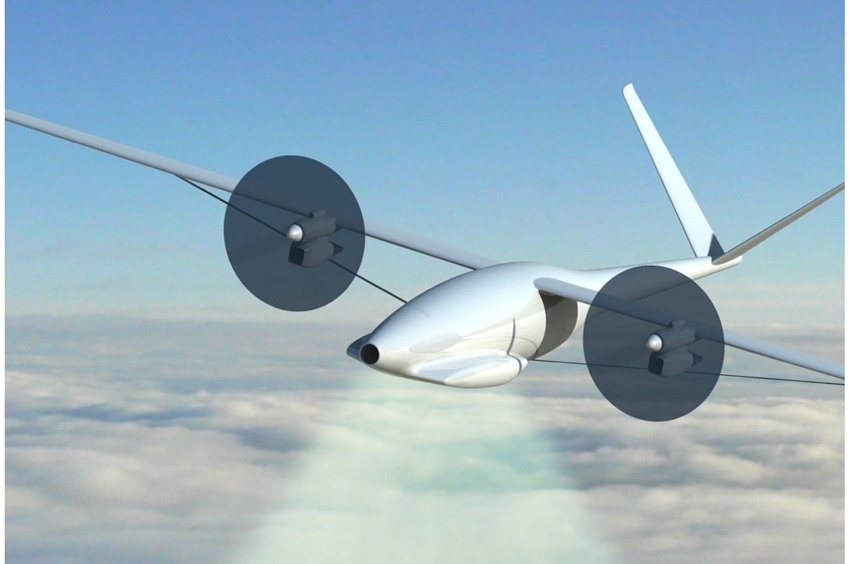BT looks to HAPS to nail down rural coverage
BT has teamed up with Stratospheric Platforms Ltd (SPL) to trial HAPS-based technology with a view to boosting rural mobile coverage.
January 30, 2023

BT has teamed up with Stratospheric Platforms Ltd (SPL) to trial HAPS-based technology with a view to boosting rural mobile coverage.
The UK incumbent is looking ahead to the use of hydrogen-powered aircraft to deliver mobile signals to difficult-to-reach consumer and business customers, but at this initial stage it is testing the technology using a tall building.
It is carrying out trials at Adastral Park alongside SPL, using the latter’s HAPS – or High-Altitude Platform Stations (HAPS) – kit, specifically antenna technology designed to be mounted on a HAPS vehicle. HAPS vehicles sit in the Earth’s stratosphere, above the flight paths of aircraft, but some way below LEO satellites. The industry has been discussing the use of HAPS for mobile coverage for well over a decade, but commercial reality has for the most part eluded its proponents.
And some big names have tried. Google is arguably the most famous, having actually carried out a commercial launch of its Project Loon – which as the name suggests was designed to provide connectivity from a fleet of balloons – with Telkom Kenya in mid-2020. But while the technology appears to have worked, the numbers didn’t stack up and Google pulled the plug on Loon almost exactly two years ago.
Google got out just as things were starting to heat up with HAPS though. The HAPS Alliance came into being three years ago, in part born out of a partnership between Loon and Softbank’s HAPSMobile, and a number of big name telcos have been working on the technology, particularly in Japan; NTT and Softbank have both been particularly active in HAPS.
As has Deutsche Telekom, which is a principal member of the HAPS Alliance and a major investor in SPL.
SPL’s work with BT will initially see the pair develop a secure 5G HAPS communications demonstration system. They will position SPL’s phased array antenna on a high building to simulate a high-altitude platform and then test its interaction with BT’s 5G architecture, connecting with its Open RAN testbed.
The test will include supporting multiple user groups and different potential use cases, concurrently on the same network, the companies said.
“This highly innovative and transformative project has the potential to further enhance our UK 4G and 5G footprint, which is already the largest and most reliable in the UK, to connect unserved rural areas and enable exciting new use cases for private users,” said Tim Whitley, Managing Director Research and Network Strategy, BT Group.
Indeed, BT explained that SPL’s antenna technology can provide uninterrupted 4G and 5G connectivity direct to consumer smart phones. Its phased antenna array with 500 steerable beams can deliver speeds up 150 Mbps – the caveat being “in some cases” – across 15,000 square kilometres, which is an area equivalent to the average footprint 450 terrestrial masts.
There are also cost and energy savings when it comes to covering remote areas, apparently, although we don’t have any actual data on that.
“The SPL team is excited to be working with BT Group to further advance its breakthrough UK-developed technology,” said SPL chief executive Richard Deakin. “This partnership will build further on SPL’s world-first 5G demonstration from the stratosphere achieved in 2022.”
Deakin is referring to the demo SPL carried out in Saudi Arabia last March. It located a stratospheric mast on civilian aircraft for the purposes of the test, and provided 5G coverage to a 450-square-km area from an altitude of 14 km.
The company made much of the fact that it was able to maintain a 5G signal from that height for a period of five hours, offering a download speed of 90 Mbps. While the company is clearly making progress, that suggests that a commercial offering may still be some way off.
BT made no mention of commercial launch, but outlined a number of possible business cases, in addition to connectivity for rural consumers. It is looking at business services for industries in remote areas, including transport, maritime security, and search and rescue, and also highlighted the possibilities for the technology to replace terrestrial networks in the cases such as disaster relief.
It might be some time before EE’s mobile customers in far-flung places are connecting their smartphones via HAPS, but the technology is starting to emerge as a contender in the quest for ubiquitous coverage, something that will really start to come into play in the 6G era.
Get the latest news straight to your inbox. Register for the Telecoms.com newsletter here.
About the Author(s)
You May Also Like








.png?width=300&auto=webp&quality=80&disable=upscale)


_1.jpg?width=300&auto=webp&quality=80&disable=upscale)


.png?width=800&auto=webp&quality=80&disable=upscale)